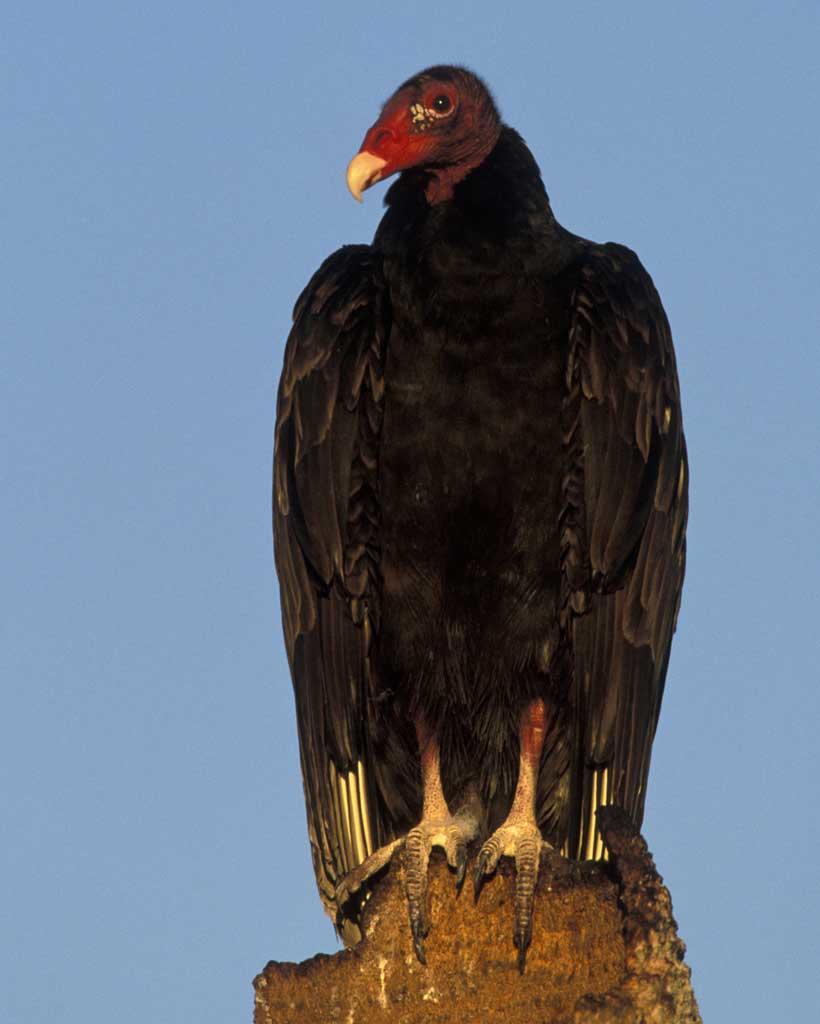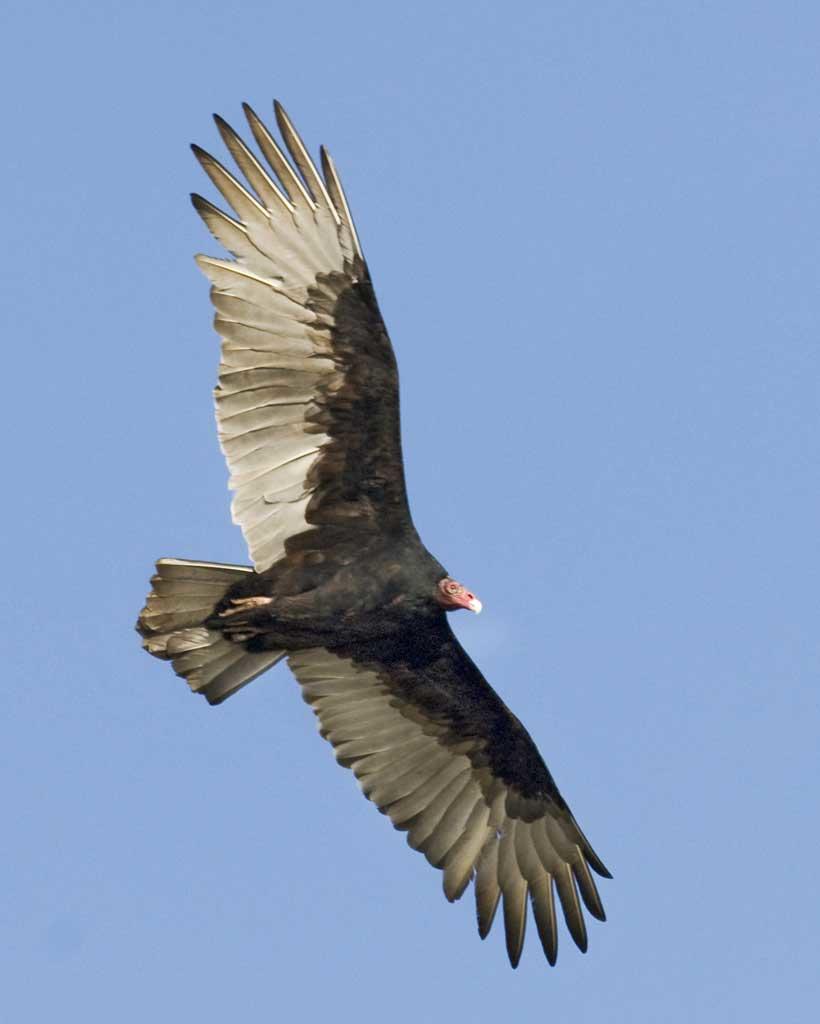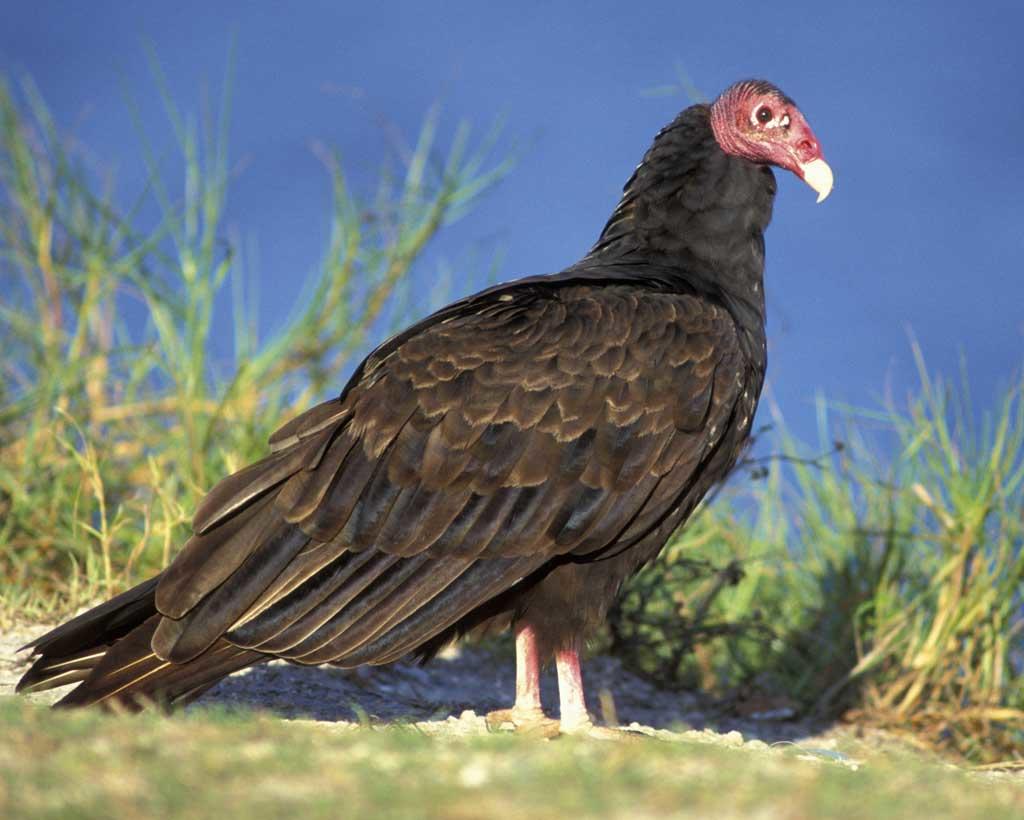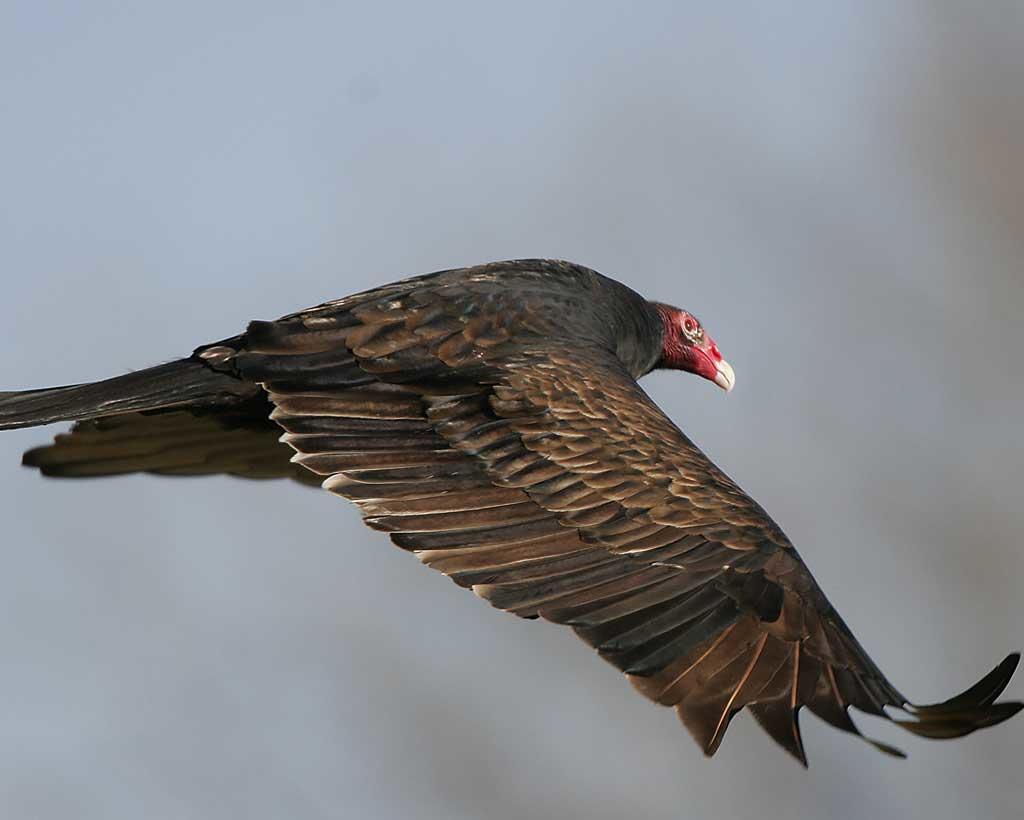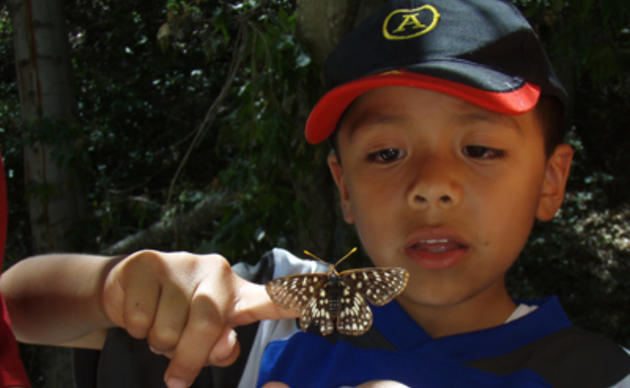
Turkey Vulture
Cathartes aura
A familiar sight in the sky over much of North America is the dark, long-winged form of the Turkey Vulture, soaring high over the landscape. Most birds are believed to have a very poor sense of smell, but the Turkey Vulture is an exception, apparently able to find carrion by odor.
Feeding Behavior
Seeks carrion by soaring over open or partly wooded country, watching the ground and watching the actions of other scavengers. Can also locate some carrion by odor: Unlike most birds, has a well-developed sense of smell.
Diet
Mostly carrion. Feeds mainly on dead animals, preferring those recently dead (that is, relatively fresh carrion). Occasionally feeds on decaying vegetable matter, live insects, or live fish in drying-up ponds.
Eggs
2, sometimes 1, rarely 3. Whitish, blotched with brown and lavender. Incubation is by both parents, usually 34-41 days. Young: One parent remains with young much of time at first. Both parents feed young, by regurgitation. If young are approached in nest, they defend themselves by hissing and regurgitating. Age of young at first flight about 9-10 weeks.
Young
One parent remains with young much of time at first. Both parents feed young, by regurgitation. If young are approached in nest, they defend themselves by hissing and regurgitating. Age of young at first flight about 9-10 weeks.
Nesting
As a part of pair formation, several birds gather in circle on ground, and perform ritualized hopping movements around perimeter of circle with wings partly spread. In the air, one bird may closely follow another, the two birds flapping and diving. Nest sites are in sheltered areas, such as inside hollow trees or logs, in crevices in cliffs, under rocks, in caves, inside dense thickets, or in old buildings. Little or no nest built; eggs laid on debris or on flat bottom of nest site.
Migration
Present year-round in much of southern United States, but northern birds migrate long distances, some reaching South America. Migrates in flocks, and may travel long distances without feeding.
Sign-up to receive updates on our events
We send out periodic emails about programs, events, and volunteer opportunities at the Center.

